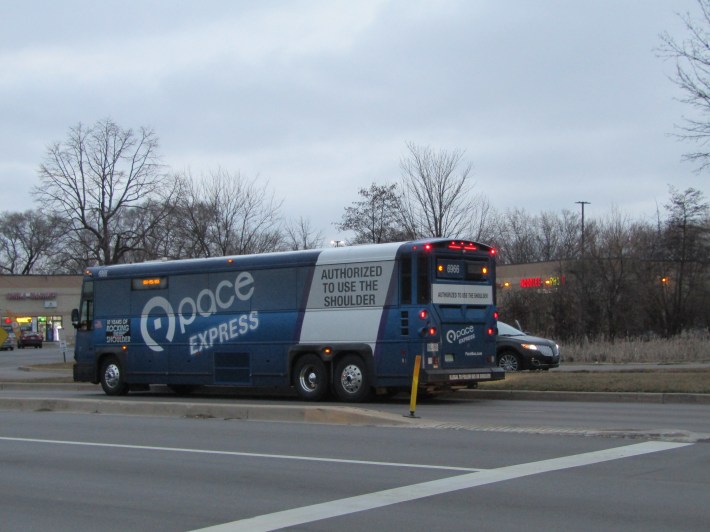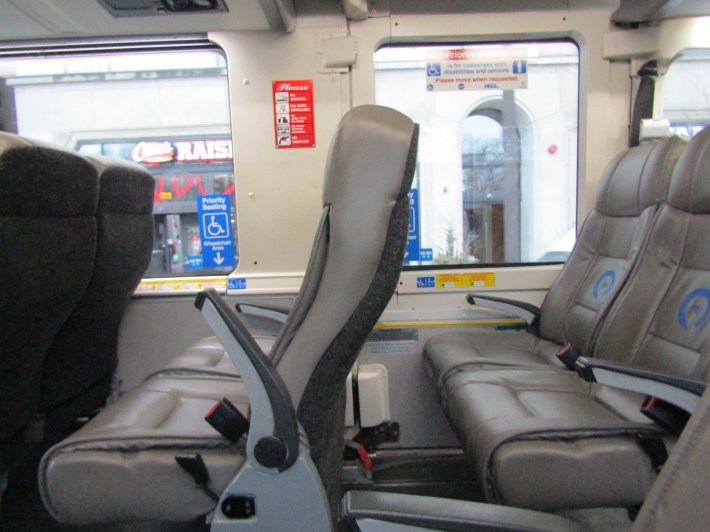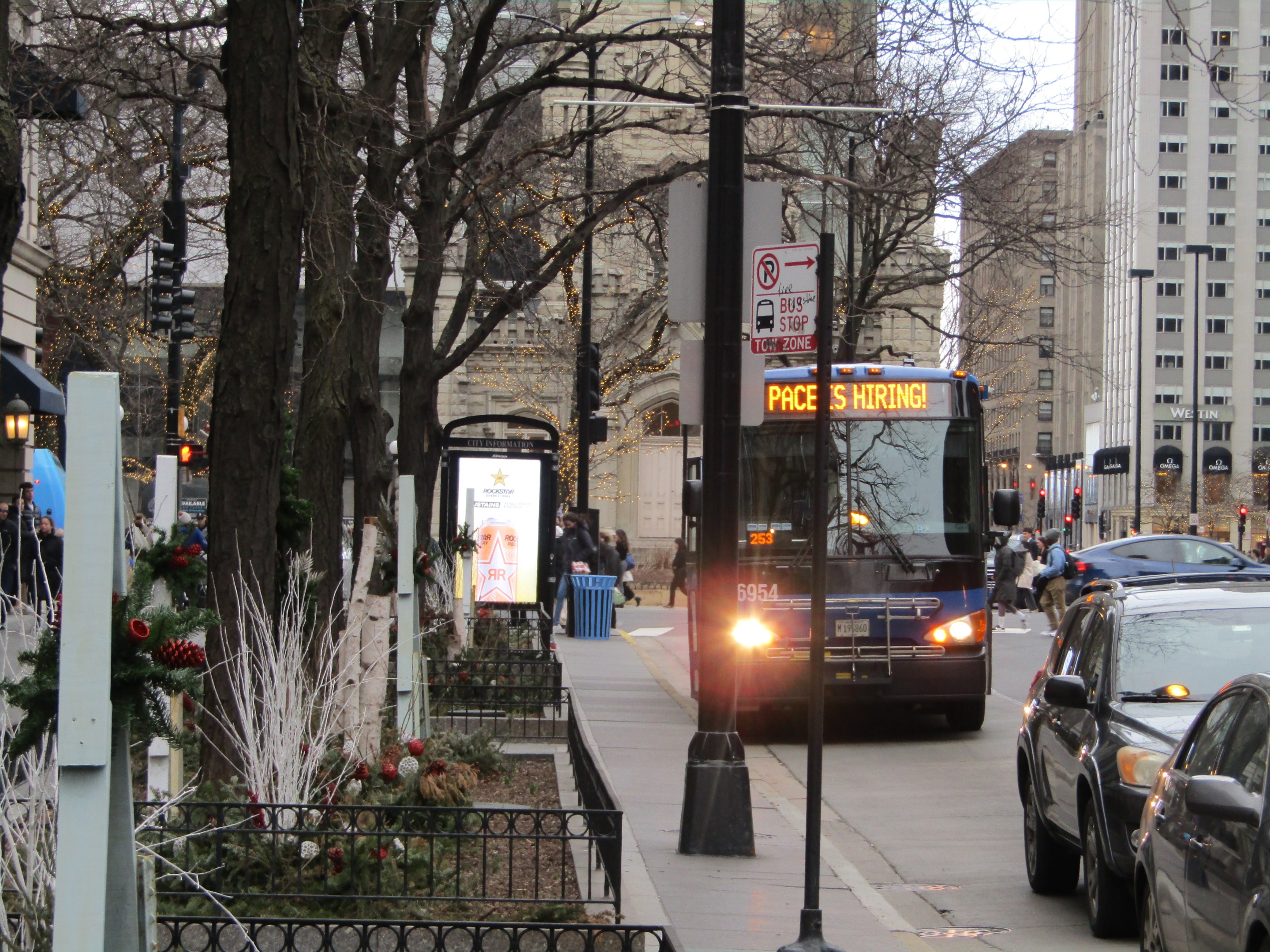
Ridership on Pace commuter express buses, especially those serving the I-55/Stevenson Expressway corridor, has been picking up. But ridership has yet to reach 2019 highs – and even if it did, the commuter bus service doesn’t have enough drivers to meet demand.
Before the pandemic, Pace operated multiple express routes geared toward getting workers from the suburbs to Chicago, from Chicago to suburban offices, and connecting suburban destinations to one another.
During the pandemic, the commuter express buses with consistent ridership took shift workers to UPS and Amazon facilities. Other routes were either eliminated altogether or had their schedules cut back.
Over the past two years, the I-55/Stevenson Expressway routes and I-90/Jane Addams Memorial Tollway routes have been slowly but surely rebuilding ridership, though during different days and times than before the pandemic. Ridership tends to be higher mid-week than it is on Mondays and Fridays, most likely due to companies settling into hybrid work models.

Service is also affected by another lingering consequence of the pandemic: a shortage of bus drivers. In December, Pace reduced service for some I-55 routes and suspended Route 851 altogether due to “change in resource availability.” It will restore Route 851 effective March 4, but some trips will remain suspended. The suburban bus agency hopes to increase I-55 service later this year, just as soon as it has enough drivers.
I-55 buses connect Chicago to Burr Ridge, Bolingbrook, Romeoville and Plainfield. The I-90 buses serve the area between Rosemont Blue Line ‘L’ station and Elgin Transportation Center, with stops on Schaumburg and Barrington. These buses primarily use expressways and can get around rush hour traffic jams by either riding on the shoulder or taking advantage of the flex lane set-up. Both routes use specialized buses with extra amenities – cushy seats, luggage racks and, in case of the I-90 buses, USB chargers under the seats. Pace has described I-55 and I-90 buses as filling the gaps in the Metra network, serving many destinations that have little to no direct Metra service.

But there are important differences. I-55 buses are pure commuter expresses, taking riders to the Loop in the morning and returning them to the suburbs in the afternoon. I-90 buses are scheduled more like regular buses, running in both directions throughout the day on weekdays and Saturdays.
Lingering impacts on ridership
Pace spokesperson Maggie Daly Skogsbakken said that, despite encouraging recovery, annual ridership on I-55 routes has a way to go. “In 2023, the [I-55 routes] had a total of 323,092 riders,” she said. “This is a 16 percent increase compared to 2022. However, this is still 48 percent lower than the ridership levels seen on these routes in 2019 prior to the pandemic.”
Route 755 runs between Chicago Union Station and Plainfield, serving the University of Illinois at Chicago and Illinois Medical District. According to the data compiled by the RTA, ridership was within the 700-800 riders a day range in 2019. Serving IMD didn’t spare the route from a ridership hit, which sank into low 100s at the height of the pandemic. But the numbers have rebounded, currently trending 600 and above.
Routes 850, 851 and 855 all make the same stops on Michigan Avenue downtown, then part ways on I-55. Route 850 came the closest to returning to pre-pandemic numbers. But routes 851 and 855 are nowhere near recovering their pre-pandemic 300-500 range. In 2023, the ridership on 851 never went above 50 and route 855 remained below 100.
Daly Skogsbakken said that Fridays typically see the lowest ridership, and the numbers are strongest Tuesday through Thursday. Monday numbers are lower than mid-week, she said, but not by much.
Daly Skogsbakken also said that this year’s Pace budget sets aside money for increasing service. “However, any additional service is dependent on operator availability,” she said. “Pace does have vehicles available for additional service.”
I-90/Jane Addams Tollway buses

Route 600, the oldest and the busiest of the I-90 routes, connects Rosemont Transportation Center and the Northwest Transportation Center in Schaumburg. Ridership hovered in the 800s before the pandemic. The pandemic dropped it to double digits, and it was in the 200-300 rider range in 2023.
Route 603, which runs between Rosemont and Elgin Transportation Centers, started out with only double digit ridership when it launched in 2017 but showed a clear upward trend, reaching into 300s in 2019. Ridership dropped back to double digits at the height of the pandemic, and currently hovers in the 100-200 range.
Routes 605 and 607, which also launched in 2017, provide intermediate service to I-90/Randall Road Park-n-Ride in northern Elgin from Rosemont and Northwest Transportation Center, respectively. While 605 followed a similar pattern as 603, 607 never went above double digits even in 2019 and currently carries anywhere between 20 and 40 riders a day.
Daly Skogsbakken said, according to Pace’s 2022 customer satisfaction survey, 63 percent of the riders used I-90 routes to get to work. She said that the ridership has been higher mid-week, but unlike with I-55 routes, Monday and Friday ridership numbers tend to be similar.
Clearly, increased ridership and reliable, frequent service go hand in hand. Hopefully Pace is able to quickly recruit and train drivers and put that budget for increased service to good use.

Did you appreciate this post? Please consider making a tax-deductible donation to help Streetsblog Chicago keep publishing through 2025. Thank you.





